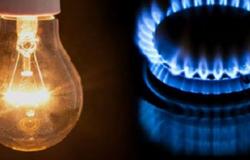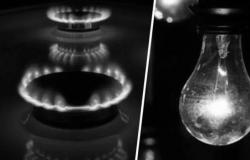The Government made official cuts in electricity and gas subsidies, reducing the maximum limits of subsidized consumption for low and medium income users, granting bonuses and establishing new wholesale values. This was announced in the Official Gazette (see resolutions of the Ministry of Energy numbers 90, 91, 92 and 93 Laws and Comments section). The transition stage to go from generalized to targeted subsidies runs from June 1 to November 30.
From the Ministry of Energy they explained that “this is how it is done the beginning of the process to move from a generalized subsidy regime to a targeted onein which the user can know the cost of kwh of electrical energy and m3 of natural gas, which is identical for everyone, and the assistance that the National State provides to users according to their payment capacity and which reaches up to a limit of limited consumption through the recognition of a lower payment (bonus).”
Currently, subsidies are segmented according to three types of households: high-income (N1), low-income (N2) and middle-income (N3). The N2 and N3 are those that cover the least part of the costs of the energy they consume.
The Seasonal Price of Energy (PEST) for the May-October period it is $57,214 per megawatt hour (MWh) for all residential users. This value has not been updated since last year and is used to calculate part of the final cost of the rates.
The regulations established that for high-income households the impact of the PEST update is total. While forLow-income (Level 2) and medium-income (Level 3) households will receive a bonus of 71.9% and 55.9% on that value.respectively.
Considering average residential consumption of 260 KWh as an example, bills will go from:
- N1 will go from $24,710 to $30,355
- N3 will go from $6,585 to $16,850
- N2 will go from $6,295 to $12,545
Likewise, new consumption limits were set, so users who exceed them will pay more for electricity service. High-income households have no caps. While For those with middle incomes, the new cap on the subsidized amount will be 250 kWh/monthreplacing the previous 400 kWh/month.
Those of Low incomes, for their part, will have a maximum subsidizable consumption of 350 kWh/month“removing the fact that these users had no limit to subsidized consumption, encouraging efficient and responsible consumption with this measure,” said Energía.
Regarding the new consumption limits for electrical users without access to the natural gas service through networks and indiluted propane gas through networks, located in certain bioclimatic zones, it was set at 500 kWh/month for the N3 and 700 kWh/month for the N2, only for the period from June 1 to August 31, 2024.
Gas
Energy also updated the price of natural gas at the Point of Entry to the Transportation System (PIST), which is transferred to the final rates, establishing the cost for the May-October period at US$3.30 per million BTU.
N1 (high-income) users will continue to pay the full PIST price determined since they do not receive subsidies. N2 users will have a 64% bonus on the price paid by high-income residents, while N3 residential users will have a 55% bonus on the PIST.
Regarding the caps or subsidized consumption limits, in the case of natural gas, the N1 do not have caps. Middle-income households maintain current limits, according to the distributor, while for low-income households, the same consumption limits apply as for N3.
During June 2024, at the three segmentation levels, the average value of the final monthly invoices will be the following:
- N1, with an average consumption of 149 m3, will go from $25,756 to $28,142
- N3, with an average consumption of 171 m3, will go from $24,465 to $26,865
- N2, with an average consumption of 159 m3, will go from $15,638 to $20,797
From Energy they clarified that “specific subsidy regimes such as the Social Tariff and Cold Zone are maintained.”
They also reported that users who have already requested their inclusion in the Registry of Access to Energy Subsidies (RASE) will not have to register again.






